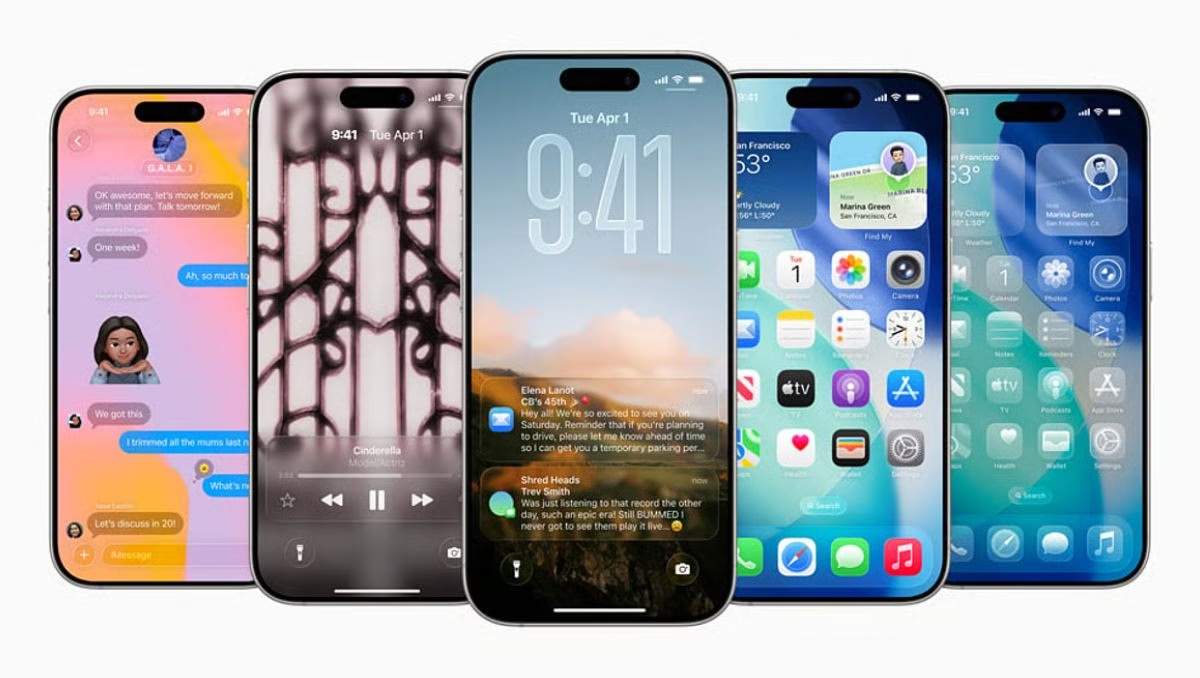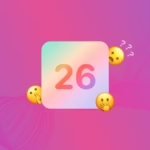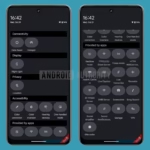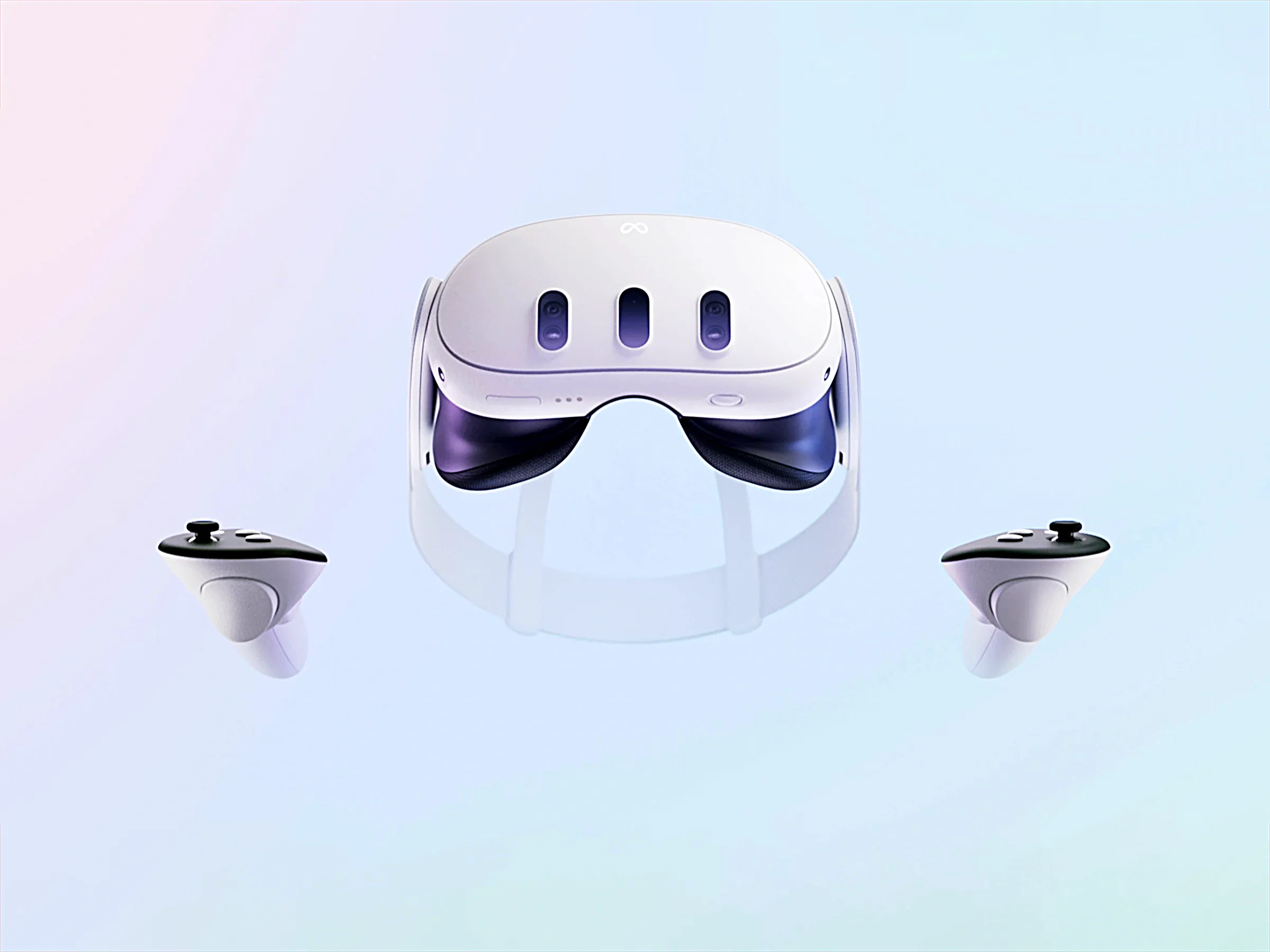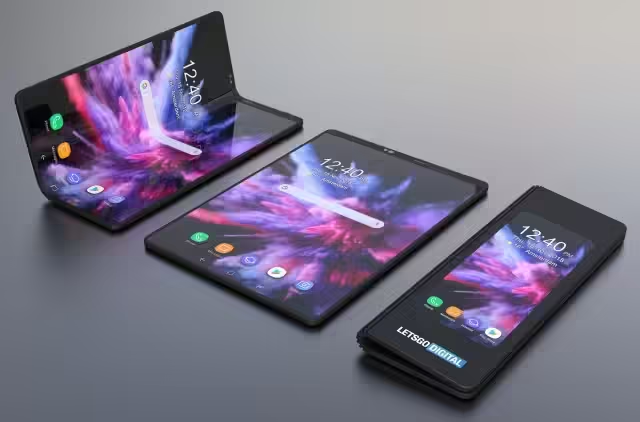Apple Liquid Glass Design Reaction: What is It and How Are Designers Responding?
Estimated reading time: 8 minutes
Key Takeaways
- ***Apple Liquid Glass*** is Apple’s ambitious new UI design language, unveiled at WWDC 2025.
- It represents a significant shift towards **translucency, depth, and organic, fluid animations**, drawing inspiration from visionOS.
- Potential **ios 26 liquid glass features** include dynamic backgrounds, adaptive UI elements, and depth-rich surfaces.
- Support for **apple liquid glass supported devices** is expected to be limited to newer models with advanced hardware capabilities.
- The **apple liquid glass design reaction** from the design community is sharply divided, with both excitement and significant concerns.
- Many **designers react to apple liquid glass** with enthusiasm for its emotional and immersive qualities, while others worry about usability, accessibility, and performance.
Table of contents
- Apple Liquid Glass Design Reaction: What is It and How Are Designers Responding?
- Key Takeaways
- What is Apple Liquid Glass?
- Exploring Potential Features: (Rumored) iOS 26 Liquid Glass Features
- Which Devices Might Support Apple Liquid Glass?
- The Core Discussion: Designers React to Apple Liquid Glass
- Beyond Designers: General Reaction and Speculation
- Conclusion
- Frequently Asked Questions
In the ever-evolving landscape of user interface design, Apple has once again captured the spotlight with the introduction of what’s being dubbed “*Apple Liquid Glass*”. Unveiled at WWDC 2025, this new UI design language represents Apple’s most ambitious leap yet towards more immersive, visually dynamic, and, quite literally, fluid user interfaces. The overall software updates from Apple in 2025 were extensive, but “Liquid Glass” has sparked particularly widespread discussion and intense speculation across the tech community. There’s even been buzz about Apple’s numbering convention itself leading up to this release.

This post delves into the core of this innovation, aiming to explore precisely what is Apple Liquid Glass, the potential ios 26 liquid glass features it promises to bring, the apple liquid glass supported devices that will experience it first, and most crucially, the apple liquid glass design reaction it has elicited. We’ll pay particular attention to how designers react to Apple Liquid Glass, dissecting the mixed reception and the intense debate surrounding this potentially groundbreaking, or perhaps just polarizing, aesthetic shift. Get ready to explore the shimmering, bending, and breathing future Apple envisions.
What is Apple Liquid Glass?
At its heart, “What is Apple Liquid Glass?” defines Apple’s latest, post-WWDC 2025 UI design language. This aesthetic paradigm takes significant inspiration from the immersive environment of visionOS, aiming to bring a similar sense of presence, depth, and organic fluidity to traditional 2D interfaces like iOS, iPadOS, and macOS.

The core focus is on *translucency*, *depth*, and *animations* that feel less mechanical and more alive. The visual effect is striking: digital surfaces gain a shimmering, almost dynamic quality, as if the interface elements are suspended within or behind layers of responsive glass. This isn’t just about simple blur or opacity; it’s about creating a sensation of depth and volume where icons, windows, and UI components seem to be embedded in a material that reacts subtly to user touch, device orientation, or even background changes. Sources like TechCrunch and a popular YouTube analysis highlighted how this design intends to blur the traditional boundaries between foreground content and background elements, creating a more unified and visually rich experience.

This marks a notable departure from Apple’s prior design evolutions, which, while often incorporating layering and shadows, generally maintained a flatter, more structured hierarchy compared to the proposed organic movement of “Liquid Glass.” The term itself is descriptive, nodding to the glossy, dynamic appearance and its adaptive behavior, where interface elements don’t just appear, disappear, or move linearly but seem to *morph* and *breathe* in real-time. This is seen as an effort to further blur the line between the physical hardware and the digital software running on it, creating a more cohesive, almost tangible, user interface. The initial apple liquid glass design reaction immediately centered on whether this visual flourish serves practical purposes or remains purely aesthetic.
Exploring Potential Features: (Rumored) iOS 26 Liquid Glass Features
The unveiling of the Liquid Glass design language coincides with the forthcoming release of iOS 26, suggesting that many of its visual hallmarks will debut as ios 26 liquid glass features. While the WWDC keynote demonstrated several key aspects, some specific implementations remain speculative, based on the directional cues provided by Apple and analysis from tech observers like those on YouTube.
Here are some of the key potential features users might see:
- *Translucent, Depth-Rich Surfaces:* UI components such as menus, sidebars, and widgets are expected to become semi-transparent, but with a sophisticated layer of depth and layering. This allows users to glimpse the content beneath, creating a sense of depth and realism that wasn’t previously possible on 2D screens. TechCrunch’s review and video analysis pointed to this as a primary visual differentiator.
- *Organic Animations:* A cornerstone of Liquid Glass is its animation style. User interactions—tapping an icon, opening a menu, dismissing a notification—are designed to trigger fluid, responsive, and non-linear animations. Instead of static transitions, elements might morph, stretch, or subtly ripple. Examples speculated upon include menus gently “morphing” into view, text fonts adapting dynamically to content scale, or background elements shifting subtly with device tilt. These organic motions are intended to make the digital interface feel more natural and less rigid, as highlighted in the YouTube breakdown.
- *Dynamic Backgrounds:* Lock screens and app backdrops are anticipated to become more interactive and adaptive. They could change based on the time of day, location, imagery pulled from photos, or simply user preference. This feature aims to enhance personalization and make the device feel more contextualized and alive, another point emphasized in early feature previews.
- *Adaptive UI Elements:* This feature suggests that elements like fonts, button sizes, and menu structures might dynamically adjust in real-time. The goal is to improve readability and visual harmony depending on the specific app, the type of content being displayed, or even environmental factors. Commentary suggests this is linked to making the interface feel more responsive and less static.
- *Performance Controls:* Given the potential graphical intensity, it is widely expected that Apple will include user options to reduce or disable the most demanding visual effects. This is a common practice with previous Apple visual overhauls (like the introduction of transparency and parallax) to ensure acceptable performance and conserve battery life on older or less powerful devices. This pragmatic expectation was noted in the TechCrunch analysis regarding potential concerns.

These features, if implemented as rumored and demonstrated, paint a picture of an iOS 26 experience that is significantly more visually engaging and dynamic than its predecessors.
Which Devices Might Support Apple Liquid Glass?
With such a graphically rich and animation-heavy design language, the question of apple liquid glass supported devices is paramount. It’s widely anticipated that the full, uncompromised experience of the Liquid Glass design language will roll out primarily across Apple’s newest devices, those equipped with the most advanced display technology and, critically, the latest generations of Apple silicon.

Based on research and the nature of the visual effects demonstrated, the devices most likely to fully support Apple Liquid Glass include:
-
- iPhone 16 and newer models.
-
- iPad Pro models equipped with the M2 chip and subsequent iterations.
- Recent Macs, especially those featuring Apple silicon (M-series chips) capable of efficiently handling demanding graphics, particularly those features inspired by or ported from visionOS.
For a broader look at anticipated Apple hardware, articles like the one covering Apple and Samsung phone rumors for 2025 provide context on the devices likely to house the chips capable of powering these features. The hardware requirements are significant. Devices will need high-performance GPUs and displays capable of rendering complex transparencies, depth effects, and fluid, real-time animations without causing stuttering or, perhaps more importantly from a user perspective, sacrificing battery life. This point was raised as a potential concern in the TechCrunch piece.
What about backward compatibility? While older devices might *support* the update to iOS 26 or macOS, it’s probable that certain elements of the Liquid Glass design will be scaled back or require users to opt-in via performance toggles. This is a familiar pattern for Apple OS updates; resource-intensive visual effects are often toned down or made optional on hardware that can’t smoothly render them at full fidelity. This ensures a usable experience across a wider range of devices while preserving the premium visual experience for those with the latest hardware. Understanding which devices supported previous OS versions like iOS 18 provides a good baseline for predicting future compatibility trends. The hardware demands are a key factor influencing the overall apple liquid glass design reaction, especially among users with older devices.
The Core Discussion: Designers React to Apple Liquid Glass
Perhaps the most interesting aspect of this new design language is the fervent and, frankly, divided apple liquid glass design reaction it has sparked, particularly within the professional design community. Designers react to Apple Liquid Glass with a spectrum of opinions, ranging from effusive praise for its aesthetic innovation to skeptical concern about its practical implementation.

Let’s break down the reactions into perceived Pros and significant Cons/Concerns, as reflected in various design forums and tech analyses:
- *Pros:*
-
- **Emotional Engagement:** A significant portion of designers are genuinely excited about the emotional potential of Liquid Glass. They praise Apple for “reintroducing feelings to their digital surfaces,” moving beyond purely functional design to create interfaces that are not just tools but are also aesthetically pleasing and engaging. The shimmering, bending, and breathing qualities are seen as a way to make digital interaction feel more intuitive and delightful, as noted by designers speaking to 9to5Mac.
- **Fresh Aesthetics & Alignment:** The organic, glass-like visual language is viewed by many as a bold and necessary step. It clearly aligns Apple’s 2D interfaces more closely with the immersive, spatially aware design principles seen in visionOS, potentially creating a more cohesive ecosystem across Apple platforms. This aesthetic shift is seen as fresh and innovative after years of more subtle refinements, a point echoed in both the 9to5Mac report and YouTube analyses.
-
- *Cons & Concerns:*
-
- **Usability and Accessibility:** This is arguably the most significant area of concern. Some designers worry that the heavy emphasis on transparency, depth effects, and fluid motion could potentially compromise core usability and accessibility. They recall the initial criticisms leveled against iOS 7’s flatter design and translucency, which some users found difficult to read or navigate, especially those with visual impairments or motion sensitivities. The fear is that Liquid Glass might prioritize visual flair over clear information hierarchy and readability. This concern was highlighted in both TechCrunch and 9to5Mac reports.
-
- **Performance Impact:** Despite Apple’s assurances about hardware capabilities, skepticism remains regarding the potential performance impact of these demanding visuals. Designers and developers alike worry about whether non-flagship or slightly older supported devices can render these effects smoothly without experiencing lag or, more critically, significant battery drain. While Apple claims new hardware advancements are key, the real-world performance remains a major question mark, especially highlighted in the TechCrunch analysis.
- **Practicality:** A vocal segment of the design community questions the *practicality* of these enhancements. They ask whether these sophisticated visual effects genuinely improve the user experience or if they are simply “eye candy” – visually impressive but ultimately distracting from core app functionality and user goals. The argument is that design should primarily serve function, and overly complex visuals might hinder, rather than help, user interaction. This viewpoint was clearly articulated by some designers interviewed by 9to5Mac.
-

The verdict from the design community is thus far definitively mixed. As one designer quoted by 9to5Mac put it, “*I’m excited that Apple is reintroducing feelings to their digital surfaces, creating interfaces that shimmer, bend, and breathe*” – a sentiment shared by those who value the emotional connection and aesthetic innovation in UI design. However, others, cited in both TechCrunch and 9to5Mac, remain cautious, preferring to wait for real-world usage and extensive testing to accurately gauge the true impact on usability, accessibility, and performance before giving their final assessment. The apple liquid glass design reaction among professionals is a microcosm of the broader tech conversation.
Beyond Designers: General Reaction and Speculation
Moving beyond the specialized world of professional UI/UX designers, the reaction from the wider tech community and general Apple user base is proving to be just as varied. The introduction of “Liquid Glass” has certainly created a stir, prompting discussions that mirror many of the points raised by designers, but often from a less technical perspective.

Some users are praising Apple for seemingly pushing the boundaries of aesthetic design once again, appreciating the visually stunning demos shown at WWDC. They see it as a natural evolution, making interfaces more modern and engaging, perhaps even exciting users about interacting with their devices in new ways.
Conversely, many users are questioning the necessity and utility of such elaborate visual effects. Concerns about battery life are prevalent, as is the simple question of whether these animations add genuine value to the user experience or are merely decorative flourishes. Some express a preference for the more understated, functional design paradigms of previous iOS versions.
Overall, there’s a palpable sense of anticipation, curiosity, and, yes, healthy skepticism. The tech press, online forums, and social media are buzzing with predictions and opinions. The core question for most users and observers outside the design bubble is the balance Apple can ultimately strike between the undeniable beauty of the Liquid Glass concept and the fundamental requirements of performance, usability, and accessibility. Early commentary, such as the TechCrunch review and various videos, including the one on YouTube, highlighted this tension.
As the YouTube analysis succinctly put it: “*The whole new tagline or name that Apple’s using—Liquid Glass—it feels more alive than I expected. … There’s some level of an organic feeling to this liquid glass, but I do love this priority of having these almost look like glass gems on top.*” This quote encapsulates the initial reaction – an appreciation for the novel, organic aesthetic mixed with an underlying question about its practical impact and long-term appeal.
Conclusion
Apple’s unveiling of the Liquid Glass design language at WWDC 2025 marks a significant moment in the evolution of its user interfaces. It represents a notable shift toward immersive, visually dynamic, and *organic* interface design, moving beyond static elements to create experiences that shimmer, adapt, and personalize. This bold direction clarifies what is Apple Liquid Glass – a visionOS-inspired aesthetic brought to the masses.

The promised ios 26 liquid glass features, such as depth-rich translucency, fluid animations, and dynamic backgrounds, suggest a future where our devices feel more alive and responsive than ever before. However, the successful implementation and user experience will heavily rely on the hardware capabilities, limiting the full experience to the newest apple liquid glass supported devices equipped with powerful chips and displays, building on trends seen with previous OS updates like iOS 18 supported devices.
The apple liquid glass design reaction, particularly how designers react to Apple Liquid Glass, reveals a community deeply divided. While excitement is high among those who appreciate the emotional engagement and fresh aesthetics, significant concerns linger regarding usability, accessibility, performance demands, and overall practicality.
As is often the case with major Apple design overhauls, much of the conversation remains speculative until the public gets their hands on the software. The real test will be how these visually stunning effects translate into everyday use across a range of supported devices and how they impact the fundamental usability of the interface. As analyses from TechCrunch, 9to5Mac, and YouTube suggest, Apple’s foray into “Liquid Glass” is undoubtedly setting the stage for the next evolution in digital interfaces, but its ultimate success will be judged by user experience, not just aesthetics.
Frequently Asked Questions
Apple Liquid Glass is the new UI design language introduced by Apple at WWDC 2025. It emphasizes translucency, depth, and organic, fluid animations, drawing inspiration from visionOS to make interfaces feel more dynamic and immersive.
What features are part of the Liquid Glass design in iOS 26?
Key potential features include translucent surfaces with a sense of depth, fluid and organic animations for interactions, dynamic backgrounds, and adaptive UI elements like text and menus that adjust in real-time. User controls to manage performance impact are also expected.
Will my device support Apple Liquid Glass?
Full support for Apple Liquid Glass is expected mainly on newer devices with advanced processors (Apple silicon, like M2 and newer) and displays, such as the iPhone 16 series, recent iPad Pro models, and newer Macs. Older devices may see some scaled-back effects.
How are designers reacting to Apple Liquid Glass?
Reactions are mixed. Many designers are excited by the fresh aesthetics and potential for emotional engagement, praising the dynamic and organic feel. Others express concerns about potential negative impacts on usability, accessibility, and performance, especially on older or less powerful devices.
Is Liquid Glass just a visual gimmick?
This is part of the debate. Supporters believe it enhances user experience through immersion and delight. Critics worry it might be primarily visual “eye candy” that could potentially distract from core functionality or introduce usability challenges. Its practical value will be determined by real-world use.


